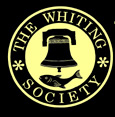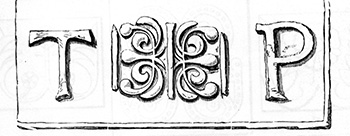Old Ringing Books
The Whiting Society have done a marvellous job of copying old ringing books and placing them on their website for us all to enjoy. In addition to this, they have done considerable research to enable biographies of the authors to be included.
Being a Somerset ringer, I am particularly pleased to see that Ellacombe's Somerset is included. To give you a taste of what a useful resource has been provided by the Whiting Society, Mr Ellacombe's biography is included below. The whole of Ellacombe's Somerset and many other fascinating books can be read at http://www.whitingsociety.org.uk/old-ringing-books/old-books-menu.html Also on this page you will find the history of the Ellacombe Chiming Apparatus, which was invented by Mr Ellacombe. The prefaces of these books are very entertaining, and there is a wealth of information contained in them.
Ellacombe's "Somerset" gives details of "all the church bells in the towers and turrets of all the parish churches of Somersetshire", as they were in 1871. In addition there are drawings of founders marks which I find very useful.
H.T.Ellacombe
Henry Thomas Ellicombe (then with an "i") was born in Alphington, Devon, on 15th May 1790, second son of Rev. William Ellicombe, the Rector, and his wife, Hannah. To those following who may do more detailed research, we warn that the couple had an earlier child given identical Christian names born in 1788, who died in infancy and was buried on 13th April 1789.
Henry grew up in Alphington Rectory, and graduated from Oriel College, Oxford, in 1812. For a few years, he studied engineering under Sir Marc I. Brunel (father of the more famous Isambard K. Brunel), but, called to the Anglican ministry, he returned to Oxford to prepare for ordination. After a brief assignment as curate of Cricklade, he became curate at Bitton, Gloucestershire, in 1817, and, progressing to vicar, was to stay in the parish until 1850. Around this time, he changed the spelling of his name to "Ellacombe", which he felt more accurately represented the original family name.
He married Anne Nicholson, mother of his six children, in 1818 at Rochester. After her death in 1825, he married Ann Bridges, who sadly died in 1831. Henry's final wife was Charlotte Welland, a clergyman's daughter from Exminster, whom he married in 1837, and who survived into his old age.
Energy and enthusiasm seem to have been features of Henry's incumbency at Bitton, and one suspects he had access to money as well. He was instrumental in getting three other churches built in the district. We don't know where or when he learned to ring - maybe as a young man at Oxford - but he was definitely a ringer of sorts. In a letter he wrote in 1864 quoted in the fourth edition of Practical Remarks ... (p.58), he says, with reference to the effect on bell handling of rope guides: "... I speak from experience for I generally ring once a week".
Although not an accomplished change ringer, he was elected to the Ancient Society of College Youths in 1861. Whatever his ability as a practical ringer, he had a keen antiquarian interest in bells, and combined this with the grounding in engineering acquired in his youth from MarcBrunel.
Henry was an enthusiastic supporter of the Oxford movement, whose aims included the expulsion of all secular activity from the church building. It's pretty clear that when he arrived at Bitton, he found the ringers to be an uncouth body of men, and he seems to have had some success winning them over to the path of righteousness. Such was the disconnect between ringing and worship, that one of his achievements was to get the ringers to agree not to ring at all on Sundays, on the understanding they could have two practice nights in the week!
His early experiences of the ringers at Bitton seem to have coloured his view of ringing generally, and in publishing Practical Remarks on Belfries and Ringers in 1849 he became the leading promoter of "belfry reform" - the process by which change ringing was absorbed into Anglican worship.
Perhaps more than any other individual, Ellacombe was a driving force in the transformation of change ringing from a secular sport to a part of Anglican worship which took place in the second half of the 19th century.
One of his achievements was to invent the "Ellacombe Chiming Apparatus" by which a number of bells could all be chimed by one (Christian) man, saving the need for six or eight (atheist) ringers! There are drawings of the apparatus in his book Practical Remarks on Belfries and Ringers. Many examples survive in towers to the present day, although rarely in use.
Ellacombe left Bitton in 1850 to become Rector of Clyst St. George, in Devon, where he was instrumental in 1864 in having the bells augmented to six. The book available here was published in 1875. He also wrote many other books and papers, including Practical Remarks on Belfries and Ringers, The Church Bells of Devon and The Church Bells of Gloucestershire. Together with C. A. W. Troyte and William Banister, he was a leading figure in the formation of the Guild of Devonshire Ringers in 1874. He died on 30th July 1885 at the age of 95.




